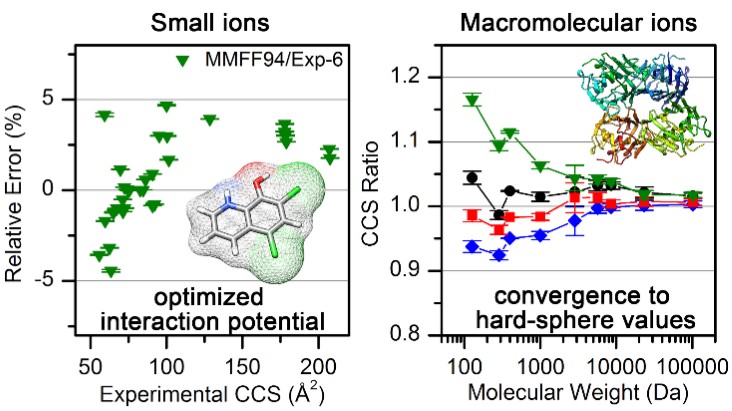Ion mobility mass spectrometry (IM-MS) has become an important tool for the structural investigation of ions in the gas phase. Accurate theoretical evaluation of ion collision cross sections (CCSs) is essential for the effective application of IM-MS in structural studies. However, current theoretical tools have limitations in accurately describing a broad range of ions from small molecules to macromolecules. Significant difficulties in developing theoretical tools for CCS calculations are associated with obtaining high-quality experimental data and molecular models. In this study, we present a general CCS calculation method by employing two drift-tube IM-MS (DTIM-MS) instruments and thorough molecular modeling procedures. It is demonstrated that an appropriate description of the van der Waals (vdW) interactions is important for accurate CCS calculations in helium drift gas. By utilizing the vdW potentials from molecular mechanics force fields, it is shown that both the appropriate vdW potential-forms and its parameters are necessary for the highly reliable CCS predictions of small molecules. We further show that specific characteristics of the vdW interaction potential become less influential on the calculated CCS with increasing ion size, and that the calculated CCS values for the macromolecules converge to the values at the hard-sphere limit. Based on these results, a general CCS calculation method is presented that can be applied to ions of various sizes and compositions for the gas-phase structural studies.

 Radially Phase Segregated PtCu@PtCuNi Dendrite@Frame Nanocata...
Radially Phase Segregated PtCu@PtCuNi Dendrite@Frame Nanocata...
 Total Syntheses of Arcyriaflavin A and Calothrixin B Using 2,...
Total Syntheses of Arcyriaflavin A and Calothrixin B Using 2,...

















